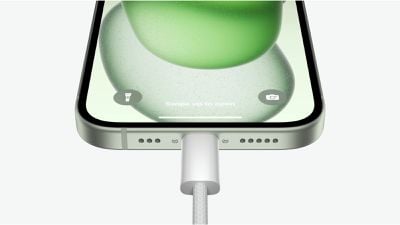Apple's iPhone 15 and iPhone 15 Pro models use a USB-C port instead of a Lightning port for charging and data transfer purposes, and the new port also allows an iPhone 15 to charge AirPods or an Apple Watch directly.

If your AirPods or Apple Watch run out of battery while you don't have access to a charger, now you can use your iPhone's battery for a little extra juice rather than carrying around a battery pack.
Additionally, if you plug an iPhone 15 into another iPhone 15, the two devices communicate with one another, determine which iPhone has the lower battery, and transfer power that way. So if you have a low battery and a friend with an iPhone 15 has a full battery, you can plug your iPhone into your friend's iPhone and get yours to charge.
With a USB-C Android phone, if the Android device has USB Power Delivery support and you connect to an iPhone with a lower battery level, the Android device will be able to provide battery power. However, if the Android phone does not have USB PD, bear in mind that the results will be inconsistent - there's no way to predict which phone will be the charger and which will get the charge.
What You Need
You'll need an appropriate cable to charge with an iPhone, such as a USB-C to USB-C cable for the new AirPods Pro 2 USB-C Charging Case, or a USB-C Apple Watch charging puck, but it's a useful function that wasn't available with Lightning.
Unfortunately, when charging another device with an iPhone 15, the charge is limited to 4.5W. That's appropriate for small devices like the Apple Watch, but it's not going to provide much power for an iPhone, so expect slow charging speeds when using iPhone to iPhone charging functionality.





















